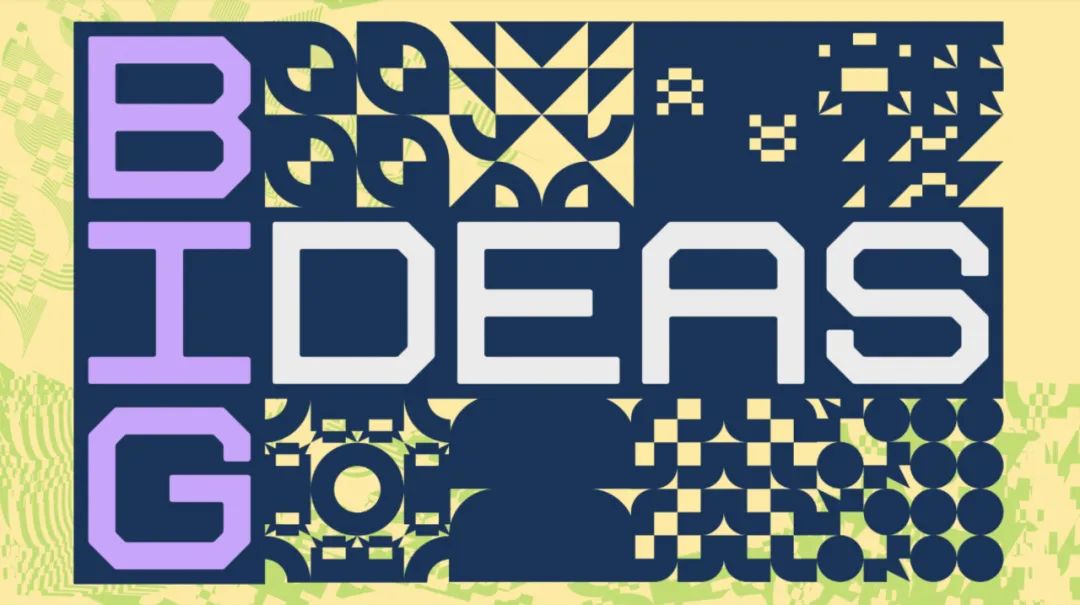
Author | Bai Ze Research Institute
a16z crypto has always been at the forefront of the cryptocurrency industry, and is one of the most well-known top investment institutions, with over $7 billion in funds for investing in cryptocurrency projects and technology. As of the writing of this article, a16z crypto has invested in 26 projects across different fields this year, including DeFi, infrastructure, gaming, L3, interoperability, and more.
Recently, a16z crypto released a blog post titled "Several Things We Are Excited About in Cryptotechnology (2024)," looking ahead to 9 key narratives worth paying attention to in the cryptocurrency industry in 2024.
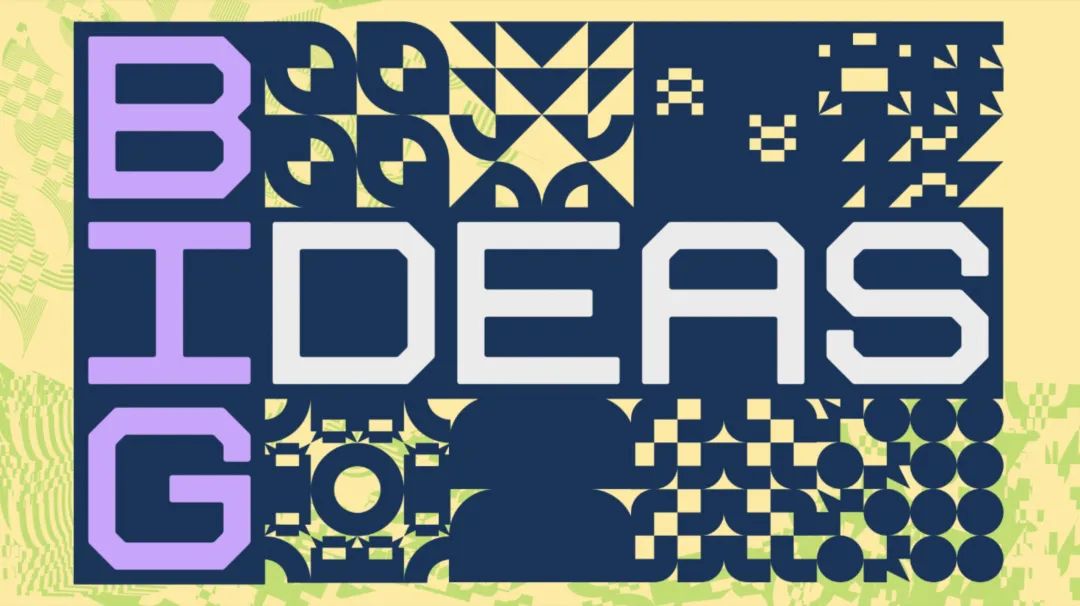
Entering a New Decentralized Era → Governance level of DAO will be further improved
Reconstructing the Future User Experience → Farewell to cumbersome interfaces, simplify user experience, and make it easy for everyone to access dApps
Rise of Modular Technology Stack → Developers will have greater flexibility than ever before, able to use interoperable components to build custom applications
AI+Blockchain → Further integration of artificial intelligence and blockchain technology, unlocking new innovative possibilities
"Playing for Earning" becomes "Earning while Playing" → The focus of Web3 games will shift from earning rewards to simply enjoying the fun of playing games
When AI becomes a game maker, providing security with cryptocurrency → Cryptocurrency will provide security and transparency for AI-driven games
Formal verification becomes less formal → New tools and technologies will make it easier to verify the security of smart contracts
NFT becomes ubiquitous brand assets → Brands will increasingly use NFTs to connect and build loyalty with customers
SNARKs become mainstream → Zero-knowledge proofs will become widespread, enabling private and secure transactions.
Upon careful consideration of these narratives, apart from the combination of AI with blockchain and cryptocurrency in two points, the rest revolve around one goal, which is to acquire mainstream users in the possible upcoming bull market cycle and achieve Mass Adoption of Web3. Just like NFTs broke into the mainstream in 2021, the next bull market will depend on the adoption of new users. Whether it's modular blockchain, zero-knowledge proofs to enhance chain performance and expand innovative new infrastructure, or reconstructing user experience (UX), brand adoption of NFTs, and transforming the core of Web3 games, these specific measures. And among these, reconstructing user experience is the fastest path to acquiring mainstream audiences.
Simplifying user experience is the cornerstone of Web3's mass adoption
For native cryptocurrency users, connecting a wallet to Uniswap for token exchange, and then transferring the target token to a dApp for staking and farming, is simple. But for mainstream users who are new to Web3, the situation is different.
What is Gas? Where to buy native tokens for paying Gas? Transaction approval? Final confirmation?
If new users want to interact with dApps on multiple chains, new problems will arise. What is Polygon? How to cross-chain tokens from Ethereum to it?
For new users to interact with dApps on the chain, these quite esoteric and highly technical concepts/terms must be learned and understood.
Currently, smart contract wallets in account abstraction provide services to users such as social media login and social recovery, which are close to the product experience of Web2, freeing users from the constraints of private keys/mnemonics and improving security. And with features such as batch transactions and Gas fee payment, it also reduces the threshold for users to use dApps to some extent.
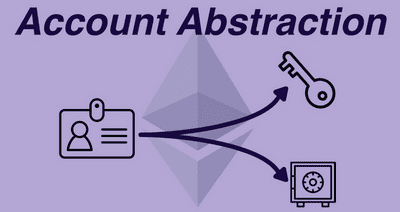
The very popular Telegram trading bot this year provides users with a new way to interact with Web3, and is widely regarded as an important channel for converting 800 million Telegram users to Web3. Through the Telegram trading bot, users can experience trading, analysis, automatic airdrop trading, asset cross-chain, and other services in a one-stop or even one-click manner without switching between various dApps. The Telegram trading bot, born to simplify the trading experience, actually provides users with a core advantage—Intent. Users only need to express what they want to trade, and the bot handles how to do it automatically.
Therefore, the Telegram trading bot can be considered as the first wave of landing Intent-Centric products.
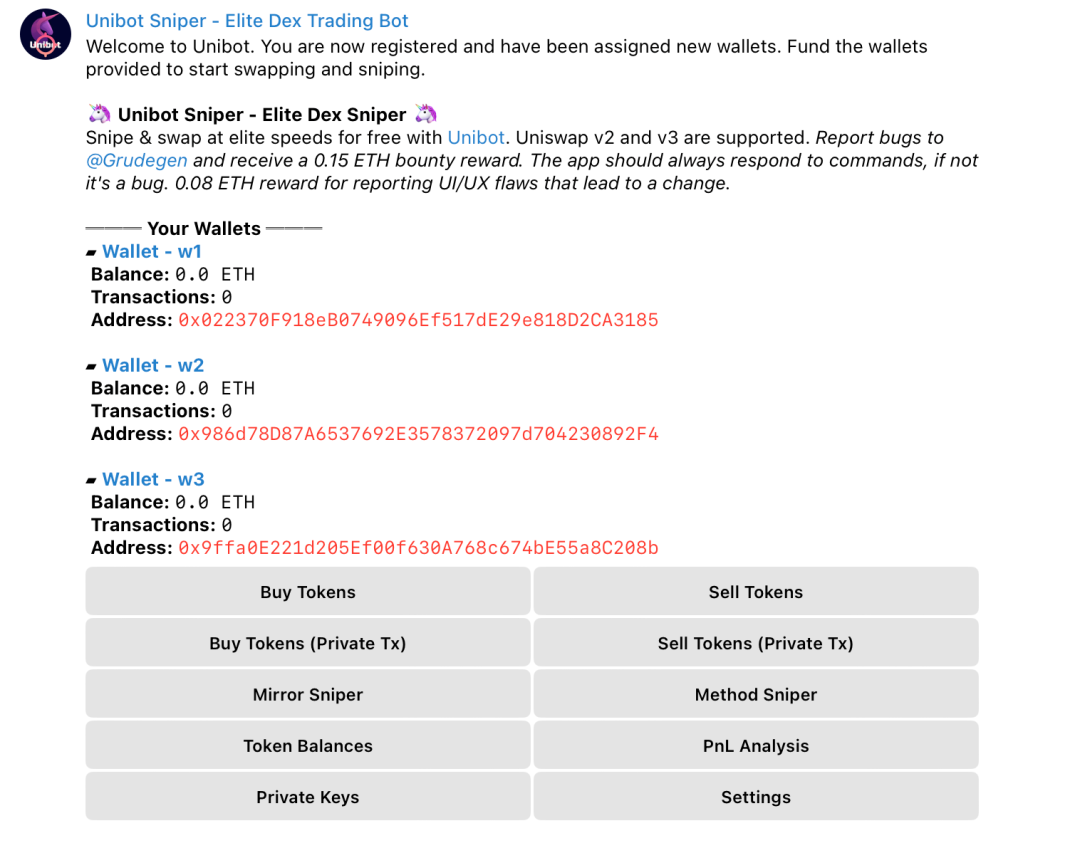
In July of this year, the concept of Intent-Centric proposed by Paradigm became popular overnight, and related products emerged like mushrooms, including various L1, DeFi, and infrastructure projects. Intent-Centric emphasizes the user's "intent," meaning that users only need to express what they want as a result, without having to worry about the process of achieving the result. If we imagine Intent-Centric products as a big box, everyone puts their own "demands" into it, and solvers match these "demands" to each other, determine the optimal trading route for each "demand," and then return the results of achieving the "demands" to everyone. The same is the result, but different people implement the trading process.
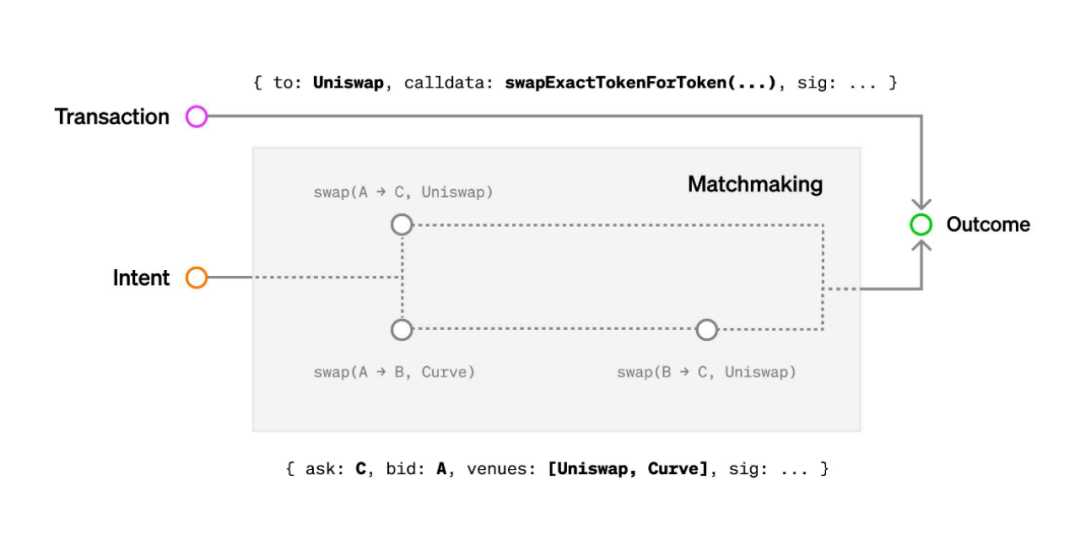
If account abstraction eliminates the concept of "account," then Intent-Centric can be said to be a more advanced abstraction, eliminating the main obstacles that users face when interacting with blockchain and Web3. Below, we take the example of the Intent-Centric project dappOS to understand the convenience and importance of simplifying the user experience for new Web3 users.
dappOS: Reconstructing the Web3 Operating Experience
dappOS is an operation protocol centered around user intent. By becoming the "intent layer" between users and public chains, cross-chain bridges, and other encrypted infrastructure, it provides users with a one-click friendly interaction experience.
After the concept of Intent-Centric became popular, dappOS quickly became one of the hottest projects in the Chinese crypto community due to its previous seed funding from Binance Labs and subsequent seed round funding led by Sequoia China and IDG Capital. Other participating investors include OKX Ventures, HashKey Capital, KuCoin Ventures, and others.
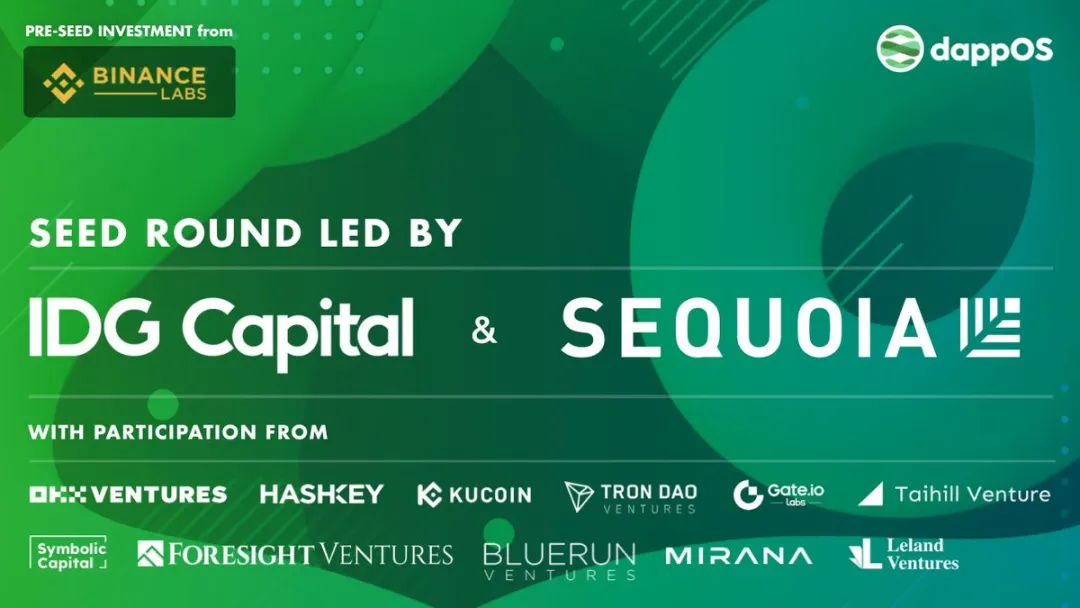
I believe that the Intent-Centric narrative of dappOS can be understood from two perspectives.
An operation protocol centered around user intent, achieving chain abstraction, allowing one-click interaction with popular dApps on different chains without switching wallets and networks, seamlessly connecting to hotspots on public chains
A new on-chain traffic distribution end, helping new public chains quickly build ecosystems and lowering the threshold for user participation in new ecosystems
An operation protocol centered around user intent
Currently, new public chains with better service capabilities and response speeds are growing exponentially, accompanied by specific application scenarios, such as the flexible and scalable Avalanche, the privacy-focused Manta Network, or the Oasys chain dedicated to blockchain games with nearly 50 games. Users are forced to create wallet after wallet for each public chain they use, and they also face the problem of fragmented assets. Instead of frequently cross-chaining assets from Chain A to Chain B, it's better to put a portion of the assets on both Chain A and Chain B.
From this perspective, inspired by operating systems, dappOS aims to become a Web3 operating protocol, or a dApp Store, abstracting complex and cumbersome concepts and processes such as public chains and cross-chains. Users can easily access dApps on multiple chains and use assets from any chain to participate in dApps on another chain through this "central hub." In other words, assets from Chain A can be directly used in a dApp on Chain B.
In the current V2 version, dappOS has integrated popular projects including Perpetual, BENQI, QuickSwap, and Stader. According to the roadmap, upcoming integrated popular projects include SyncSwap, Curve, DeFi Kingdom, Frax Finance, GMX, and Lido.
dappOS relies on dappOS Account, a "unified account" (smart contract account). The unified account allows users to directly manage the total assets of all chains, and commonly used tokens such as ETH, USDT, USDC, and DAI can be used in any dApp on any chain. For example, using USDT on the BNB Chain in Perpetual on Optimism for perpetual contracts can be done with just one click.
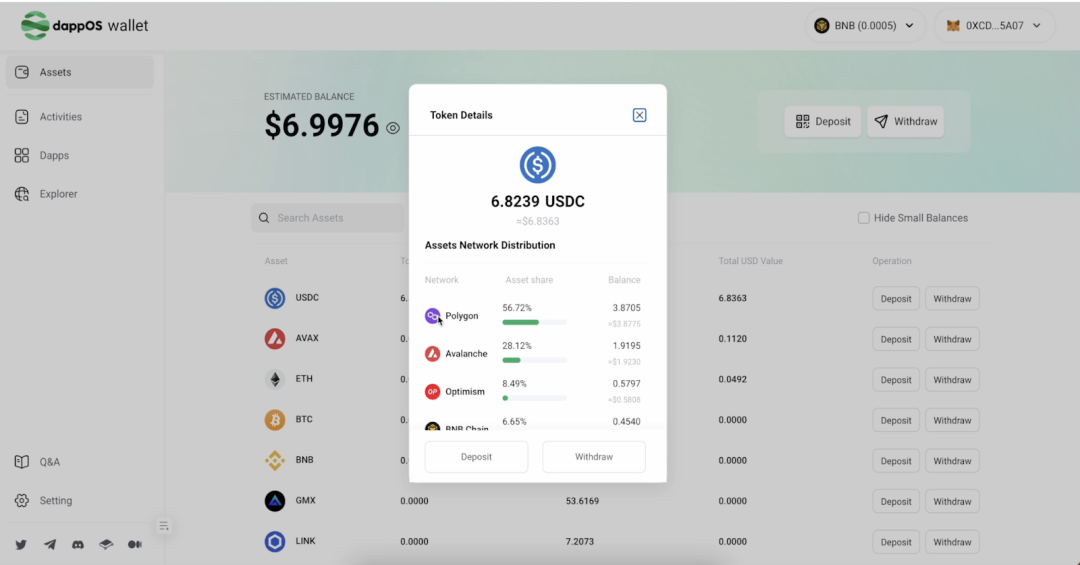
Let's take Perpetual, the earliest integrated dApp on dappOS, as an example. This is a perpetual DEX based on Optimism.
First, let's see the difference between using Perpetual on Optimism and using Perpetual on dappOS.
On Optimism:
- Exchange $ETH for $USDT on Uniswap
- Cross-chain $USDT from Ethereum to Optimism
- Cross a small amount of $ETH to Optimism for paying gas fees for interactions
- Deposit $USDT or $USDC in Perpetual and start using it
This asset transfer process takes almost half an hour to complete, and new users often give up halfway.
On dappOS:
Directly deposit $USDT or $USDC from Ethereum, BNB Chain, Avalanche, Polygon, and other chains into Perpetual and start using it
One operation takes only 5 minutes.
In summary, dappOS achieves Intent-Centric through the unified account and dappOS Network, greatly simplifying the user experience.
A new on-chain traffic distribution end
dappOS has consistently been one of the top three dApps ranked by transaction volume on Manta Network in the past few weeks, bringing in over 100,000 transactions per week. You should be familiar with Manta, a star ZK modular blockchain that has received funding from top investment institutions such as PolyChain Capital and Spartan. I believe the official cooperation between Manta Network and dappOS has played a significant role, as dappOS users from other chains are also a force to be reckoned with.
In addition, after QuickSwap integrated dappOS V2, the TVL increased by over $3.84 million in two weeks, the number of transactions increased by 110,629, and there were 6,558 new users. Furthermore, the total liquidity added by dappOS users on QuickSwap reached $3,840,217, accounting for 41.02% of QuickSwap's TVL on Manta, with a trading volume of $2,641,538.
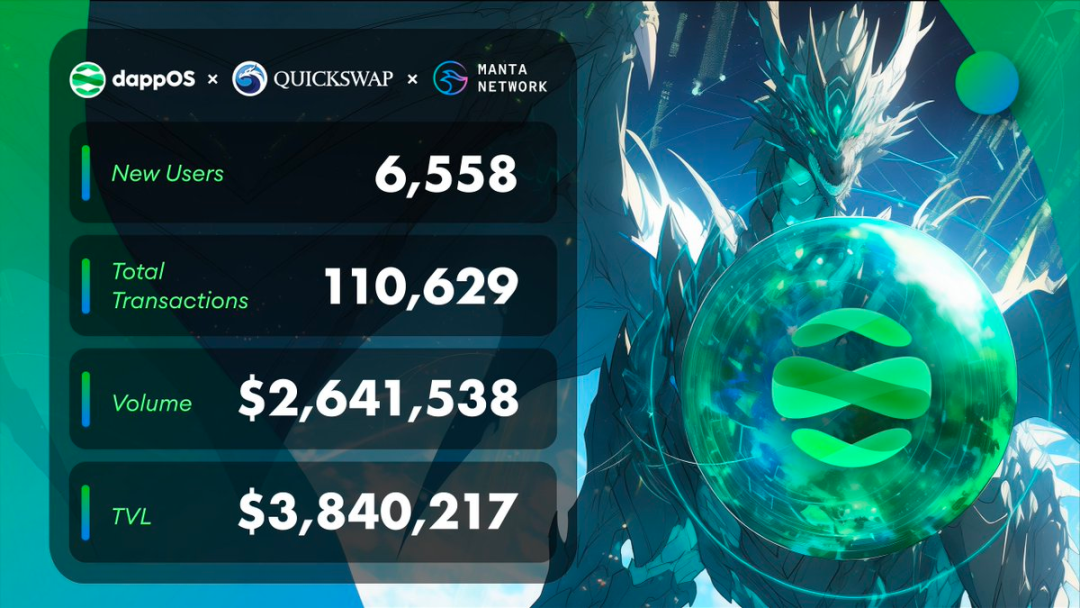
I also had the first-hand experience on QuickSwap, and after several swaps and LP additions, I found that the gas fees for using QuickSwap on dappOS were very low, with a total cost of less than $1. dappOS supports seamless interaction with Manta Network's QuickSwap from chains such as Ethereum, Arbitrum, and Avalanche, with an overall fee reduction of up to 85%. Even for new users, based on the simplification of transactions through Intent-Centric, they can participate in airdrop interactions with just a simple understanding of swaps and liquidity mining.
In today's established multi-chain development, it is difficult for a single dApp to distribute existing users and traffic to newly deployed public chains, due to the aforementioned problem of fragmented assets. Taking QuickSwap as an example, dappOS allows Polygon users to interact with Manta Network with existing assets in just one click, or on any other supported public chain. By resolving the dilemma of fragmented assets, QuickSwap's traffic distribution is achieved through dappOS.
Similarly, in the current competition for a piece of the pie in the public chain, a new public chain's rapid introduction of new users is achieved through economic incentives, whether it's enticing token airdrops or attractive ecosystem interaction funds. The most typical example is zkSync, with 2.3 million unique users, and Blast, which attracted $700 million TVL in just ten days. Why do they do this? It's also due to the problem of fragmented assets. Without cross-chain user assets, they cannot use the new public chain. Taking Manta Network as an example, based on Intent-Centric, dappOS allows users from any chain to interact with existing assets on QuickSwap.
According to the cooperation announcement between dappOS and Manta, the two parties will jointly provide $10 million to support the dApp ecosystem development of Manta. It is expected that more new applications integrated with dappOS will soon appear in the Manta ecosystem. As the Manta ecosystem thrives, more users will quickly integrate into Manta through dappOS and become long-term users.
Therefore, from this perspective, dappOS can become a new on-chain traffic distribution end, supporting dApps and public chains to quickly attract users.
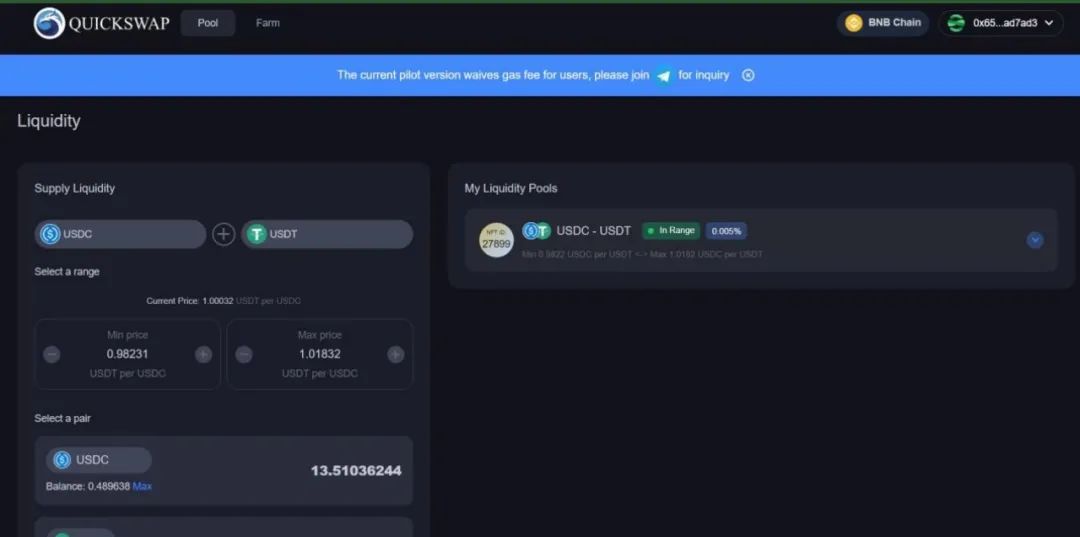
dappOS's triple airdrop expectations, and a little ambush
In simple terms, there is a great opportunity to win Manta Network's airdrop by interacting with dApps in the Manta Network ecosystem on dappOS (currently only QuickSwap). This is because actual interactions with assets from other chains involve deposits and transactions (handled by solvers). Similarly, there are two other airdrop expectations related to dappOS that are worth paying attention to.
One is that the official dappOS account hinted at a new round of Rewards airdrop in December. Rewards can be understood as "earnings from trading," rewarding users who continue to interact with a specific dApp on dappOS with USDT. The previous round of Rewards was for the dApp Perpetual and lasted for one month. From observations on Twitter, users who interacted a few times could receive an 80 USDT airdrop, while those who interacted more could receive up to 1000 USDT.
The other is, of course, the native token of dappOS. Although it has not been explicitly mentioned or hinted at, the luxurious investment lineup is still worth our attention. There is no need to deliberately increase interactions, just follow the official activities or Rewards. This not only allows you to receive USDT airdrops but also ensures that you won't be left out in any snapshot, no matter when it occurs.
Regarding how to use dappOS, I have created a simple tutorial on Google Docs, using the popular Manta Network QuickSwap as an example:
Conclusion
Web3 represents a paradigm shift in the trust attributes of applications, decentralizing power from centralized intermediaries to user communities. But like any innovative technology, Web3 must overcome various obstacles before achieving global mass adoption. Simplifying the user experience is one of the most important aspects.
Just as dappOS solves a problem we often joke about, "how to quickly get your elders to use Web3?" Open dappOS, create a "unified account," deposit some USDT, and start trading on the dApp aggregation interface, just like using WeChat mini-programs. With multi-chain asset interoperability and smooth operations, it's as simple as using a centralized exchange.
First, make it easy to use, then make it commonly used.
In 2021, the rise of NFTs brought global attention to Web3, but at that time, simplifying the user experience was just talk. The influx of new users' demand for learning technical terms gave rise to a large number of crypto education blogs.
With the emergence of account abstraction and Intent-Centric, a16z's focus, and the return of simplified user experience to the forefront, the question arises: Can new Web3 users use dApps without learning complex terms? Can Web3 new users complete an interaction in just five minutes without looking up information? As the world's attention turns back to Web3, can the entire industry be ready to attract the next billion users with lower entry barriers? We wait and see.
Note:
The above projects and viewpoints should not be considered as investment advice. DYOR (Do Your Own Research). According to the notice issued by the central bank and other departments on "Further Preventing and Dealing with the Risks of Virtual Currency Trading Speculation," the content of this article is for information sharing only and does not promote or endorse any business or investment activities. Readers are strictly advised to comply with local laws and regulations and not participate in any illegal financial activities.
Due to the revision of the public account, articles will no longer be published regularly.
If "Baize Research Institute" has been helpful to you,
please give it a "like" and mark it as "reading."
免责声明:本文章仅代表作者个人观点,不代表本平台的立场和观点。本文章仅供信息分享,不构成对任何人的任何投资建议。用户与作者之间的任何争议,与本平台无关。如网页中刊载的文章或图片涉及侵权,请提供相关的权利证明和身份证明发送邮件到support@aicoin.com,本平台相关工作人员将会进行核查。




